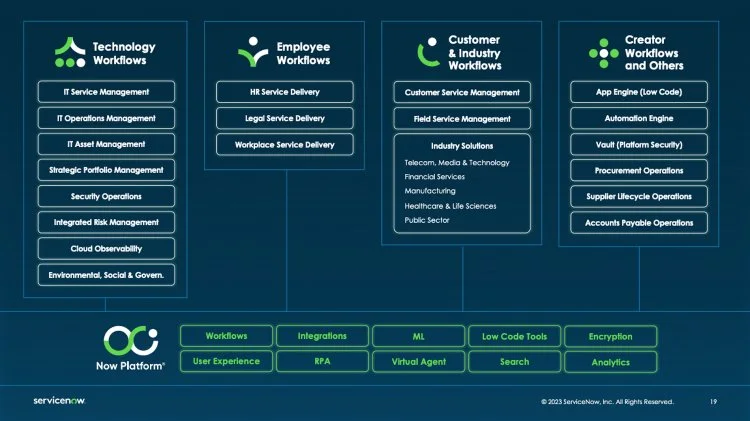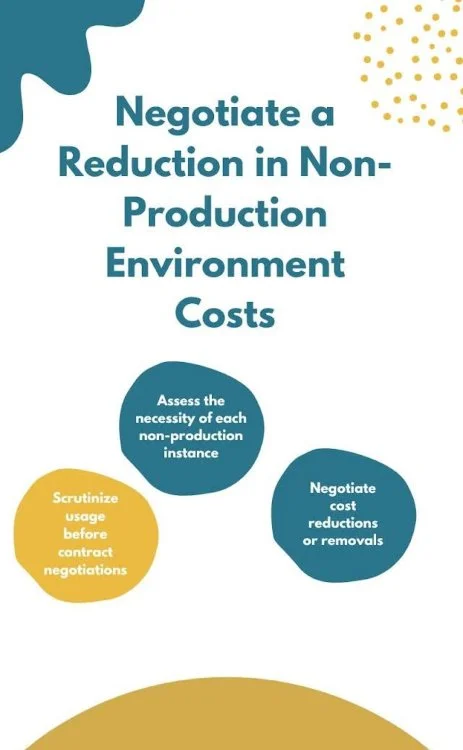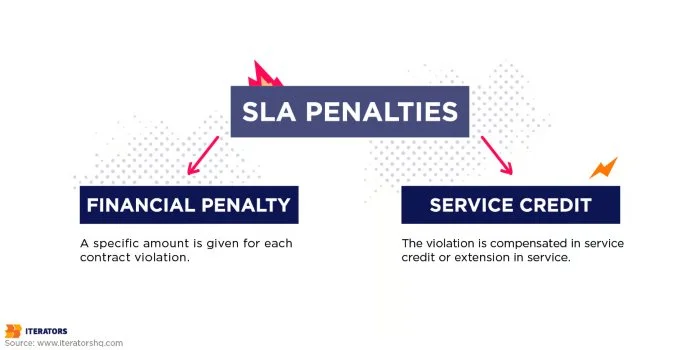10 Tips for Negotiating your ServiceNow Agreement
ServiceNow powers automation for over 6,200 companies, including 80% of the Fortune 500.
It saves businesses hundreds of thousands of hours by streamlining IT, employee, and customer workflows.
But if you’re not careful, your ServiceNow contract can cost far more than it should.
Rigid contract terms, complex license metrics, and overlooked volume discounts can drive up expenses.
A strategic negotiation process can make sure you only pay for what you need — on your terms.
This guide gives you 10 proven tactics to lower costs, secure flexibility, and maximize your ServiceNow investment.
Why is ServiceNow Negotiation Important?
ServiceNow contract negotiation determines how much you pay, how you use the platform, and what flexibility you have over time.
Your current contract likely includes predefined contract terms that may not align with your actual needs. Understanding license metrics helps you avoid overpaying for unused software while ensuring compliance.
Optimizing your procurement contract negotiation process gives you leverage to reduce costs and improve service levels, but failing to negotiate strategically can lock you into rigid terms that limit scalability and budget efficiency.
Key Reasons for Negotiating Your ServiceNow Agreement
Cost Reduction – Without strategic renewal negotiations, you may overpay due to contract complexity and rigid pricing structures
Rightsizing Licenses – Analyzing your license metric ensures you purchase only what you need, preventing overspending on unused software
Volume Discounts – Large enterprises can secure advantageous software contracts by bundling purchases and leveraging high user counts
Flexible Contract Terms – Customizing the contract period and contract cycle ensures alignment with your company’s growth strategy
Avoiding Unfavorable Commitments – Poor contract lifecycle management can result in vendor lock-in, unnecessary features, and costly renewal clauses
10 Tips for Negotiating Your ServiceNow Agreement
1. Audit Your ServiceNow License Entitlements vs. Actual Consumption
ServiceNow employs a role-based licensing model, where costs are determined by the specific roles assigned to users, such as 'Fulfiller' or 'Approver'. Each role has distinct permissions and associated costs, making it crucial to align user roles with actual job functions to avoid unnecessary expenses.
To optimize your ServiceNow investment, you should regularly audit your license usage. Identify users with assigned roles who have not logged in or performed any activities within a specified period, such as the last 90 days. Reclaiming these underutilized licenses can lead to significant cost savings.
Implementing a robust Software Asset Management (SAM) strategy, as shown below, can give better visibility into software usage, improving compliance and optimizing license allocations. Effective SAM practices can reduce software costs by up to 30% by reclaiming unused licenses and preventing over-purchasing.
2. Negotiate Custom Pricing for Non-Standard Modules
ServiceNow provides comprehensive product suites like IT Service Management (ITSM), IT Operations Management (ITOM), Customer Service Management (CSM), and Human Resources Service Delivery (HRSD). However, not all organizations require every module within these suites. To avoid unnecessary expenses, it’s best to assess your specific needs and negotiate contract terms that allow for the á la carte selection of applications that align with your actual deployment. The image below shows some more ServiceNow products.
For instance, if your organization primarily focuses on IT service workflows, you might not need modules related to HR service delivery. By customizing your ServiceNow package to include only the necessary applications, you can optimize both functionality and cost. This approach means you’ll invest in tools that directly support your operational objectives without incurring costs for unused features.
Engaging in detailed discussions with ServiceNow representatives about your organization's unique requirements can lead to more flexible pricing structures. ServiceNow's pricing is typically provided on a quote-by-quote basis, with factors such as the number of modules and types of licenses influencing the overall cost. By negotiating a customized package, you can make sure you’re only paying for the functionalities you need, and potentially access significant cost savings.
3. Avoid Per-User Pricing Where Possible
ServiceNow typically employs a named-user licensing model, where each user assigned a specific role, such as 'Fulfiller' or 'Approver', requires an individual license (some examples shown below). This approach can lead to inefficiencies, especially when users with minimal interaction occupy costly licenses.
To address this, consider negotiating for concurrent user licensing, which allows a set number of users to access the platform simultaneously, regardless of their identities. This model is particularly useful for organizations with users who access the system sporadically, as it means that licenses are used more effectively.
Alternatively, explore service-based access models that tie licensing costs to specific services or transactions rather than individual users. This approach aligns expenses more closely with actual usage patterns and can lead to significant cost savings. Engaging in detailed discussions with ServiceNow representatives about your organization's unique requirements can result in more flexible pricing structures.
4. Negotiate a Reduction in Non-Production Environment Costs
ServiceNow provides organizations with multiple instances, including production, development, testing, and sandbox environments. Each additional non-production instance incurs extra costs, which can accumulate significantly over time.
To manage these expenses effectively, it's crucial to assess the necessity of each non-production instance. Organizations often maintain development and testing environments so that system changes are thoroughly evaluated before deployment. However, some companies may request additional instances, such as User Acceptance Testing (UAT) or sandbox environments, which may not always be essential.
During contract negotiations, scrutinize the utilization of these environments. If certain non-production instances are underused or redundant, negotiate their removal or a cost reduction. This approach helps make sure your organization pays only for the environments that provide tangible value, optimizing your ServiceNow investment.
5. Lock in Future Discounts for Expansions
When planning to expand your organization's use of ServiceNow, it's essential to negotiate predefined volume discounts for additional modules, new user tiers, or expanded workflows. Without these agreements, future expansions can lead to significantly higher costs than initially anticipated.
ServiceNow's pricing model is influenced by various factors, including the number of users, selected modules, and specific organizational requirements. For example, IT Service Management (ITSM) licenses may start at around $90 per user per month, while IT Operations Management (ITOM) modules can range between $150 to $200 per user per month. These costs can escalate with each additional user or module if not properly negotiated in advance.
Here’s a breakdown by DSS.bg:
By securing predefined volume discounts during initial contract negotiations, your organization can mitigate unforeseen expenses associated with scaling up. This proactive approach ensures that as your use of ServiceNow grows—whether by adding new modules like Customer Service Management (CSM) or increasing the number of users—you benefit from consistent and predictable pricing. Engaging in these discussions early with ServiceNow representatives allows for a tailored pricing structure that fits your organization's growth trajectory.
6. Cap Annual Cost Increases with a Predictable Price Model
ServiceNow contracts often include price escalation clauses, which lead to increased costs over time. To manage these expenses, negotiate a cap on annual price increases, ensuring predictable budgeting.
Without such caps, organizations may face significant cost hikes upon renewal, especially if they have expanded their ServiceNow usage. Implementing a cap on annual price increases can provide financial predictability and safeguard against unexpected budgetary pressures. For instance, some IT contracts that typically rise 3% to 5% annually have seen vendors demanding increases of 10% to 30%.
To establish these caps you need to engage in proactive contract negotiations. This approach helps your organization sustainably manage its investment in ServiceNow and align costs with long-term strategic goals.
7. Separate Managed Services from Your Core ServiceNow Subscription
When negotiating your ServiceNow contract, it's important to distinguish between the core platform subscription and any bundled managed services or service provider support. ServiceNow's integrated services, while convenient, often come at a premium compared to specialized third-party managed service providers (MSPs). By negotiating these components separately, you can gain better control over costs and tailor services to your organization's specific needs.
Working with an external MSP for ServiceNow can lead to significant cost savings. For instance, organizations have reported reducing their ServiceNow support costs by up to 30% when opting for offshore MSPs. These providers offer flexible pricing models that allow businesses to scale services according to their evolving requirements.
On top of that, third-party MSPs often bring specialized expertise and dedicated resources to help your ServiceNow instance operate at peak performance. This approach boosts operational efficiency while allowing your internal IT teams to focus on strategic initiatives, driving business growth. You can see more benefits below:
By separating managed services from your core ServiceNow subscription, you can negotiate more favorable terms, customize service offerings, and achieve a higher return on investment.
8. Adjust the Contract Period to Align with Your IT Roadmap
Aligning your ServiceNow contract duration with your organization's IT roadmap is essential for operational flexibility and financial prudence. ServiceNow often advocates for multi-year agreements, but these may not always align with your evolving IT infrastructure strategy. For instance, if you plan to migrate workflows or adopt new technologies within the next 2-3 years, committing to a 5-year contract could lead to misalignment and potential inefficiencies.
A study by MinterEllison highlights that organizations with comprehensive contract management strategies can achieve cost savings of 10-25% on their total contract spend. This shows the importance of tailoring contract periods to match your specific IT strategy, optimize resource allocation, and minimize unnecessary expenditures.
When your ServiceNow contract terms are in sync with your IT roadmap, you’ll maintain the agility to adapt to technological advancements and organizational changes. This strategic alignment boosts operational efficiency and positions your organization to respond effectively to future challenges and opportunities.
9. Negotiate Custom SLA Penalties for Downtime and Performance Issues
ServiceNow's standard Service Level Agreements (SLAs) may not always impose substantial penalties for service disruptions or performance lapses.
If your organization is heavily reliant on automation, IT Service Management (ITSM), or incident response, you’ll need to negotiate customized SLA penalties that address downtime and performance issues effectively. This ensures that the service provider remains accountable and that your organization's operations are protected. These penalties can vary, as shown below:
Incorporating specific penalty clauses into your SLA can serve as a strong deterrent against service failures. For example, a telecommunications company faced a $1.04 million penalty due to a 48-hour service disruption, as their SLA stipulated a $10,000 penalty for every hour of downtime beyond a 4-hour grace period. These types of clauses incentivize service providers to maintain robust performance standards, thereby safeguarding your organization's interests.
When drafting these custom SLA penalties, it's essential to define clear metrics for performance, outline the consequences of non-compliance, and establish remediation processes. This proactive approach ensures service reliability while fostering a transparent and accountable relationship with your service provider.
10. Consolidate Business Units Under a Master Agreement for Maximum Savings
Consolidating disparate ServiceNow agreements from various departments into a single master contract can lead to major benefits for your organization. This approach boosts your negotiating power which can result in more favorable pricing and terms. By aggregating demand, your organization could qualify for bulk discounts, which can save significant costs.
A unified contract simplifies contract lifecycle management across all business units. Centralizing contract oversight lowers administrative burdens and minimizes the risk of compliance issues. This streamlined approach helps all departments adhere to consistent terms and conditions. In fact, organizations with centralized contract management have reported a three times higher rate of contract compliance.
Furthermore, consolidating contracts can improve your vendor relationships by establishing a single point of contact. This consolidation drives better communication and collaboration, leading to improved service delivery. A centralized agreement also allows for more effective monitoring of vendor performance so that service levels meet your organization’s expectations.
Common Mistakes When Negotiating Your ServiceNow Contract
Negotiating a ServiceNow contract requires careful attention to specific aspects unique to the platform. Missteps in this process can lead to unfavorable terms and higher costs. Below are common mistakes organizations make during ServiceNow contract negotiations and strategies to avoid them:
1. Overlooking License Utilization Analysis
Many organizations fail to assess their actual usage of ServiceNow licenses before entering negotiations. This oversight can result in paying for unused or underutilized licenses. To avoid this, conduct a thorough usage analysis to identify and eliminate unnecessary licenses and make sure your contract reflects your organization's true needs.
2. Neglecting to Benchmark Pricing
Without understanding market rates, companies often accept pricing that is higher than necessary. Benchmarking ServiceNow's pricing against similar organizations can provide leverage to negotiate more favorable terms. This practice ensures that your organization is not overpaying for services compared to industry standards.
3. Accepting Standard Terms Without Customization
ServiceNow's default contract terms may not align with your organization's specific requirements. Accepting these without negotiation can lead to unfavorable conditions. It's crucial to tailor the contract to address your organization's unique needs, such as incorporating specific service level agreements (SLAs) and performance metrics.
4. Failing to Align Contract Terms with Business Objectives
Misalignment between contract terms and your organization's strategic goals can hinder operational efficiency. Be sure that the contract supports your business objectives by aligning licensing structures, service offerings, and support levels with your organization's plans and growth strategies.
5. Underestimating Future Needs
Not considering potential growth or changes in service requirements can lead to inadequate contract terms. Anticipate future needs and negotiate terms that provide flexibility for scaling services, adding new modules, or adjusting user counts without incurring significant penalties.
By being aware of these common pitfalls and proactively addressing them, organizations can secure ServiceNow contracts that are both cost-effective and aligned with their operational needs.
Closing Thoughts
Negotiating your ServiceNow contract is not just about cost savings, it’s about securing flexibility, scalability, and control over your IT investment.
When you fail to challenge contract terms, you run the risk of getting locked into unnecessary expenses and rigid conditions. Every clause, license, and service provider agreement should align with your actual needs.
Have you secured the best possible deal, or will your next renewal reveal costly mistakes?



















